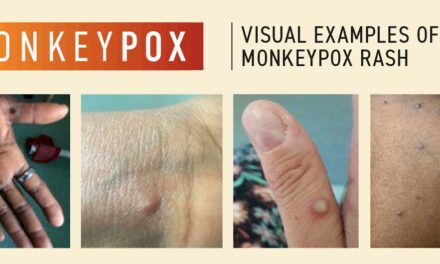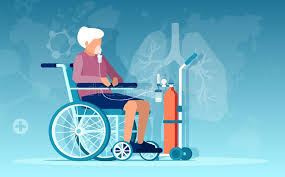
Situation at a glance
On 2 September 2023, the Ministry of Health, Welfare and Sport of the Netherlands notified the World Health Organization (WHO) of a laboratory-confirmed human case of infection with a swine-origin influenza A(H1N1) variant (v) virus in the province of North Brabant, Netherlands. This is the first human infection caused by influenza A(H1N1)v virus reported in the Netherlands in 2023.
Worldwide sporadic human cases of influenza A(H1N1)v have been reported previously, including from the Netherlands. According to the International Health Regulations (IHR,2005), a human infection caused by a novel influenza A virus subtype is an event that has the potential for high public health impact and must be notified to the WHO.
This case was picked up as part of routine surveillance of respiratory illnesses. Based on the available information, there is no clear indication of the source of infection, and no direct contact with pigs was reported. As of 7 September, there were no symptomatic contacts of this case and no further detections have been reported in routine surveillance. All five close contacts were followed for 10 days- the maximum incubation period and none developed symptoms. Thus, there was no evidence of person-to-person transmission and the case is considered as a sporadic human case of influenza A(H1N1)v. The likelihood of community-level spread among humans and/or international disease spread through humans is considered as low.
Description of the case
On 2 September 2023, WHO was notified of a confirmed human infection with a swine influenza A(H1N1)v virus, in Netherlands through the European Commission’s confidential Early Warning and Response System (EWRS).
The case is an adult from the province of North Brabant with no underlying medical conditions and no history of occupational exposure to animals. On 20 August 2023, the patient developed fatigue and general malaise and the following day developed an acute respiratory infection with onset of chills, sneeze, cough, headache, and generalized weakness, followed by fever on 22 August.
On 21 August 2023, the patient reported symptoms as part of participatory surveillance[1] of acute respiratory infections and submitted a self-collected combined nose and throat swab specimen to the laboratory. On 22 August 2023, the specimen was forwarded at the Dutch National Influenza Centre location at the National Institute for Public Health and the Environment (RIVM) where it tested positive for influenza A virus and negative for A(H1N1)pdm09, both tests included on a commercial 24 pathogen multiplex nucleic acid amplification assay on 23 August.
Further routine subtyping was performed on 24 and 25 August with RT-qPCR assays. Tests for seasonal influenza viruses and H5 viruses were negative. In addition, a laboratory-developed test (LDT) and another commercial assay for generic influenza A virus detection confirmed the presence of type A influenza virus in the specimen.
Routine whole genome sequencing using nanopore technique and virus isolation were started on 28 August. On 30 August, sequencing results revealed that the virus, A/Netherlands/10534/2023, is an A(H1N1)v Eurasian avian-like clade 1C.2.2 swine influenza virus. The HA genome segment clustered closely with recent clade 1C.2.2 swine influenza viruses from 2022 and 2023 from the Netherlands.[2] It clustered less closely with previous clade 1C.2.2 A(H1N1)v (from 2019) and A(H1N2)v (from 2020) viruses from the Netherlands. Phenotypically, the virus is sensitive to neuraminidase inhibitors oseltamivir and zanamivir.
The virus isolate will be shared with the WHO Collaborating Centre in London, United Kingdom of Great Britain and Northern Ireland, and the World Organization for Animal Health (WOAH) avian and swine influenza reference laboratory at the Animal and Plant Health Agency (APHA), UK. The sequences are available from the GISAID database under accession EPI_ISL_18168180.
As of 13 September, the person is recovered. Investigations reported that the individual did not work at a pig farm or other business involving pigs and does not work in health care. Therefore, there is no clear indication of the source of infection.
Epidemiology of the disease
Influenza A(H1) viruses are enzootic in swine populations in most regions of the world. When an influenza virus that normally circulates in swine is detected in a person, it is called a “variant influenza virus”. H1N1, H1N2 and H3N2 are major subtypes of swine influenza A viruses in pigs and occasionally infect humans, usually after direct or indirect exposure to pigs or contaminated environments.
Human infections with variant viruses tend to result in mild clinical illness, although some cases have been hospitalized with more severe disease and some have been fatal.
Sporadic human infections caused by influenza A(H1N1)v and A(H1N2)v viruses have been reported in the Netherlands previously, and there has been no evidence of sustained human-to-human transmission.
This is the first human infection caused by swine influenza A(H1N1)v virus reported in 2023 in the Netherlands, and the third human infection over the past five years. Since 1986, nine variant cases have been documented in humans in the Netherlands.
Public health response
National authorities monitored the case and all close contacts. As of 7 September, none of the five close contacts have reported any symptoms. Further antigenic virus characterization is ongoing. The Zoonosis Centre and veterinarians conducted an investigation, but no possible source of infection was identified. Therefore, no animal monitoring or testing was performed.
Few influenza viruses are currently detected in the Netherlands, and none of these characterized are variant swine influenza A viruses, apart from the current case reported.
The (online) participatory surveillance; part of www.influenzanet.info is focused on syndromic surveillance among those who may not seek care for their illness and includes a self-test study with over 17 000 participants. Participants are asked each week whether they have symptoms. From those who report a sore throat, runny nose, cough, or dyspnoea up to 200 persons are invited each week to send in a combined nose and throat swab for centralized testing at the RIVM. Over 5500 specimens have been tested since October 2022.[3]
WHO risk assessment
Most human cases result from exposure to swine influenza viruses through contact with infected swine or contaminated environments. Occasionally, the source of exposure has remained unidentified.
As these viruses continue to be detected in swine populations worldwide, further human cases following direct or indirect contact with infected swine can be expected.
Current evidence suggests that these viruses have not acquired the ability to sustain transmission among humans. There has been limited, non-sustained human-to-human transmission of variant influenza viruses, although ongoing community transmission has not been identified. In this event, there was no human-to-human transmission resulting in symptomatic disease detected and no further detections have been reported in routine surveillance.
The risk of detecting additional cases associated with this event appears to be low.
If needed, the risk assessment will be reviewed should further epidemiological or virological information become available.
WHO advice
Surveillance:
- This case does not change the current WHO recommendations on public health measures and seasonal influenza surveillance.
- WHO does not advise special traveller screening at points of entry or restrictions concerning the current situation of influenza viruses at the human-animal interface.
- Due to the constantly evolving nature of influenza viruses, WHO continues to stress the importance of global surveillance to detect virological, epidemiological and clinical changes associated with circulating influenza viruses that may affect human (or animal) health and timely virus sharing for risk assessment.
Notification and investigation:
- All human infections caused by a novel influenza subtype are notifiable under the IHR and State Parties to the IHR (2005) are required to immediately notify WHO of any laboratory-confirmed case of a recent human infection caused by an influenza A virus with the potential to cause a pandemic. Evidence of illness is not required.
- In the case of a confirmed or suspected human infection caused by a novel influenza virus with pandemic potential, including a variant virus, a thorough epidemiologic investigation of a history of exposure to animals, travel, and contact tracing should be conducted. The epidemiologic investigation should include early identification of unusual respiratory events that could signal person-to-person transmission of the novel virus. Clinical samples collected from the time and place of the case should be tested and sent to a WHO Collaboration Center for further characterization.
Travel and trade:
- WHO does not recommend any travel and/or trade restrictions for the Netherlands based on the currently available information.

Prevention measures:
- General hygiene measures, such as washing hands before and after touching animals and avoiding contact with sick animals, should be adhered.
- Travelers to countries with known outbreaks of animal influenza should avoid farms, contact with animals in live animal markets, entering areas where animals may be slaughtered, or contact with any surfaces that appear to be contaminated with animal faeces.
- Influenza viruses that infect pigs are different from human influenza viruses. There is no vaccine for influenza A(H1N1)v infection licensed for use in humans. However, some partners develop candidate vaccine viruses (CVV) for novel zoonotic influenza viruses with pandemic potential as part of pandemic preparedness activities.Generally, influenza vaccines against human influenza viruses are not expected to protect people from influenza viruses that normally circulate in pigs. Although the seasonal influenza vaccine does not protect against swine viruses, WHO recommends seasonal influenza vaccination to avoid severe disease from infection with the seasonal influenza virus.
Further information
- WHO. Current technical information including monthly risk assessments at the Human-Animal Interface can be found at the WHO website
- WHO. Influenza virus infections in humans October 2018.
- WHO. Case definitions for diseases requiring notification under the IHR (2005).
- WHO. IHR (2005).
- WHO Manual for the laboratory diagnosis and virological surveillance of influenza (2011).
- WHO. Terms of Reference for National Influenza Centres of the Global Influenza Surveillance and Response System.
- WHO. Public health resource pack for countries experiencing outbreaks of influenza in animals: revised guidance.
- WHO. Protocol to investigate non-seasonal influenza and other emerging acute respiratory diseases.
- WOAH. Swine influenza.
- ECDC. Zoonotic influenza – Annual Epidemiological report for 2022.
- Annual Epidemiological report for 2022 – Zoonotic Influenza ECDC
- ECDC. Factsheet on swine influenza in humans and pigs
[1] The purpose of participatory surveillance is to determine the incidence of acute respiratory infections in the community. Participants can sign up to participate in self-test for SARS-CoV-2 to get insight in the incidence of SARS-CoV-2 in the community and the circulation of variants. A subset is asked for self-swabbing for other respiratory viruses and some respiratory bacteria, to get insight in the causes of reported acute respiratory infection symptoms in patients that do not consult a GP or hospital for their symptoms.
[2] https://www.rivm.nl/zoonosen/surveillance-landbouwhuisdieren/surveillance-varkensinfluenza
[3] https://www.rivm.nl/griep-griepprik/feiten-en-cijfers#irzelftest
Citable reference: World Health Organization (13 September 2023). Disease Outbreak News; Influenza A(H1N1) variant virus – the Netherlands. Available at: https://www.who.int/emergencies/disease-outbreak-news/item/2023-DON486











